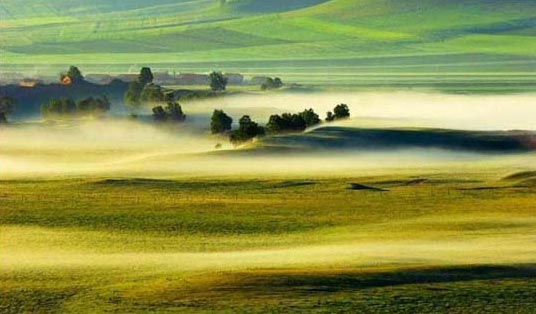
Ma Yueming, director of Gangcha Police Bureau of Qinghai, said, "The diagonal antelope is a national Class-A protected species. Hunting them is illegal and will be severely punished. In recent years there's been little hunting. We enhanced the patrol and interacted with the people. In 2000, the local government confiscated guns from the herders, so the threats fell to nearly zero."
Ge Yuxiu's passion is capturing the beautiful moments of the creatures. And his works also reflect changes in their way of life brought by changes in the environment.
This picture is called Homeland, with a question mark. The antelopes feel lost on their way back to the grassland, confused by desertification.
And there's more, immediate, pain. This antelope was unable to escape the thorny enclosures used by herders to divide their land.
Ma said, "When the antelopes flee the wolves, the thorns severely restrict their movement and pose a threat to their lives. In this core antelope protection zone, we removed one hundred and fifty thousand meters of thorns. It was based on consensus from herders in the community."
Ge Yuxiu will stay outdoors for days, recording the changes. He's a man with a mission.
Ge said, "In recent years, the government has stepped up protection efforts. Qinghai also has its own strategy called 'Ecological Milestone'. So protection awareness is rising. The government is doing things. And the ordinary people are doing things as well. The number of diagonal antelopes is going up."
Ge Yuxiu crusade has already lasted a dozen years. His works have introduced many rare species to the public and sounded the alarm to protect the ecology around Qinghai Lake.
He sees it as a responsibility for himself and everyone.
Ge said, "The earth we live on is shared by humans and other animals. In other words, people belong to the earth, not the other way around. The wild animals should enjoy the same freedom and equality. We are all part of the earth and deserve the same respect."
As for the future, Ge Yuxiu has a bigger plan. He wants to travel along the Qinghai-Tibet railway to photograph other rare species distinctive/unique to the region.